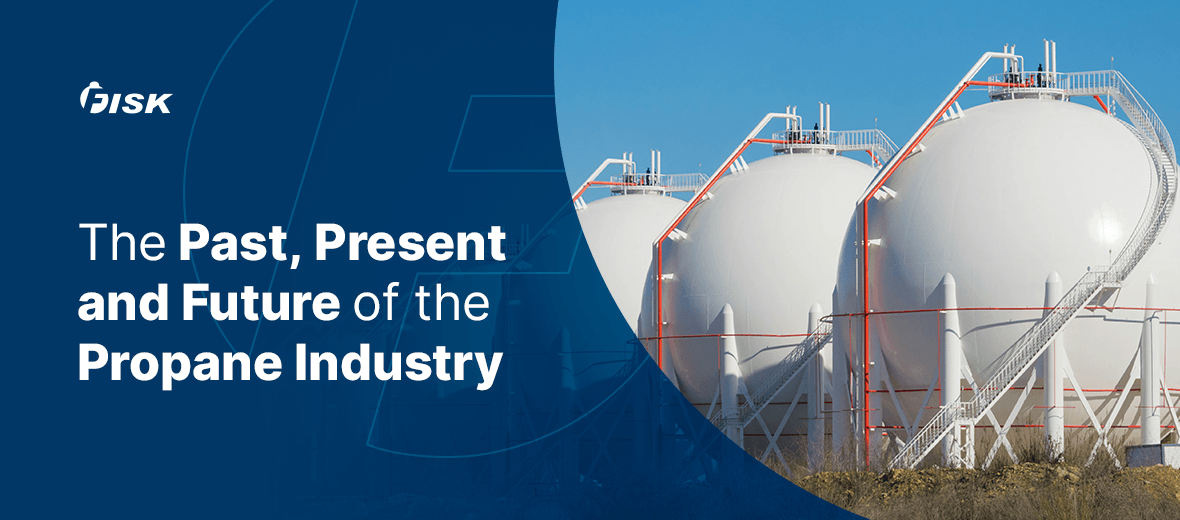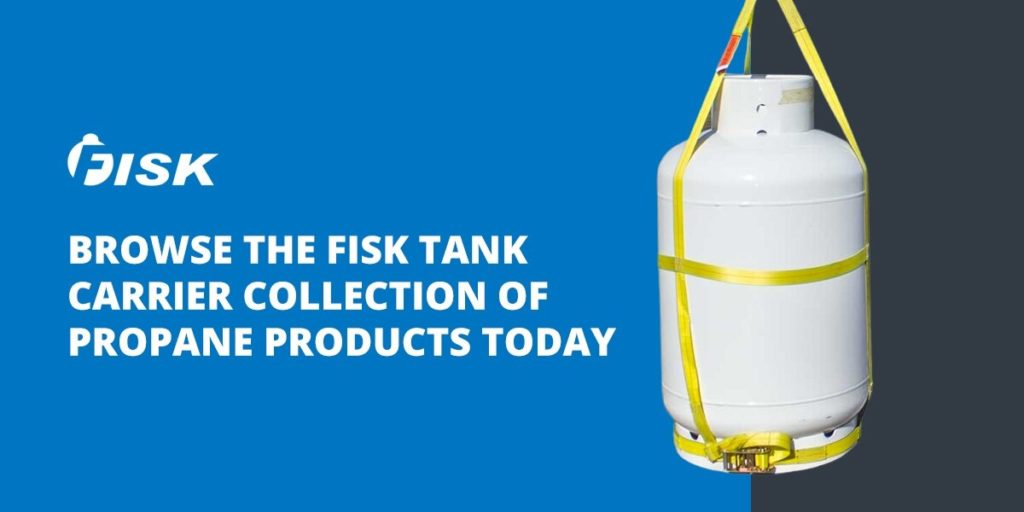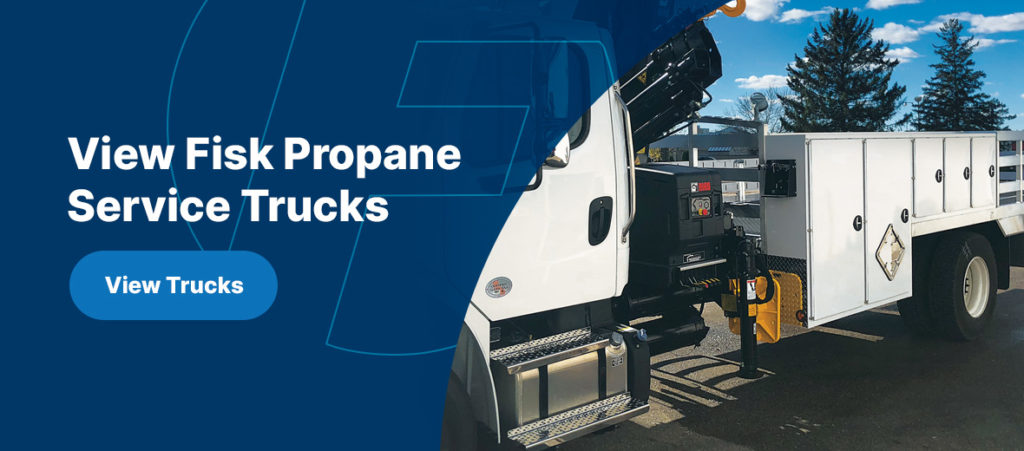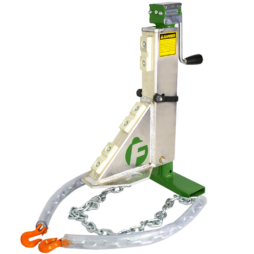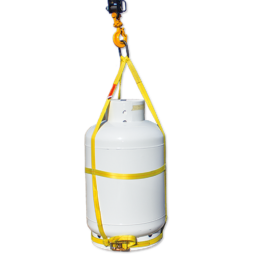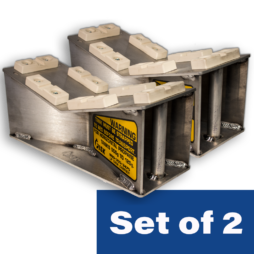Table of Contents
1. Life in the Propane Industry
2. History of the Propane Industry
3. Current State of the Propane Industry
4. Future of the Propane Industry
Although it is a newer fuel source, propane plays a significant role in the U.S. energy landscape and shows enormous potential for growth in the future.
This post will dive into the propane industry — where propane comes from, who discovered it and what we’re likely to see in the coming years.
Life in the Propane Industry
Working in the propane industry provides a promising career path for all employees, from human resources representatives to service technicians. In general, propane industry employees feel that their jobs are rewarding and important to their community, an impact that will only increase along with the demand for propane.
U.S. demand for propane is growing steadily, which indicates a promising future ahead for the propane industry. Propane, as one of the fuels at the forefront of the alternative fuel movement, offers benefits including:
- Efficiency: Propane has a higher octane rating than gasoline, which results in improved engine life compared to that of conventional gasoline-powered engines. This property makes it an excellent choice for fueling vehicles like personal cars, buses and even some heavy equipment.
- Clean burn: Propane releases fewer carbon emissions and harmful pollutants than traditional fuels like diesel and gasoline. However, it’s important to note that this benefit also depends on the vehicle and its unique characteristics.
- Cost-effectiveness: Propane is a relatively inexpensive fuel, especially when compared to other popular fuels like gasoline.
Most people want a meaningful career where they feel like they are a part of something greater than themselves. Those who work in the propane industry get the chance to see the positive impact their work has on their communities, from fueling school bus fleets to powering homes across the country.
The History of the Propane Industry
Over the years, propane has gone by many names — propane autogas, liquefied petroleum gas and bottled gas, to name a few. However, compared to the natural gas people used to light their homes and streets beginning in the late 1700s, propane is a relatively new fuel.
It’s difficult to pin down the exact origins of propane, as several different people played a role in its discovery. It took some time from its initial discovery to become as widely used as it is today:
- 1850s: Pierre-Eugene-Marcellin Berthelot, a French chemist, first synthesized propane in his lab.
- 1867: English industrial chemist Dr. Edmund Ronalds discovered naturally occurring propane while dissolving Pennsylvania crude oil.
- 1910: Chemist and explosives expert Walter Snelling confirmed propane as a volatile substance present in crude oil. He made this discovery while investigating leaking vapors from the gas tank of a Ford Model T.
- 1912: Americans began to use propane to fuel their homes.
- 1927: Manufacturers began developing the first propane-powered domestic cooking appliances.
- 1932: The city of Los Angeles used propane to power all the cooking and water heating appliances in the Olympic Village.
- 1933: Fuel producers added an odorant called mercaptan to propane to make detecting gas leaks easier.
- 1990: The Clean Air Act of 1990 approved propane as a clean alternative to other fuel sources.
- 1992: The Energy Policy Act of 1992 reinforced the Clean Air Act’s claims of propane as a clean fuel alternative.
- 2020: The American propane market rose to an estimated $34.2 billion.
Where the Propane Industry Is Currently At
Currently, propane accounts for almost 2% of the nation’s energy consumption. While its versatility makes it useful for a wide variety of applications in many different industries, the residential sector is the primary consumer of propane.
In 2021, about 5% of all American households used propane as their primary heating fuel. Typical domestic applications include:
- Grilling: One of the most common places people use propane is in backyard grills and other outdoor cooking equipment like portable camp stoves.
- Clothes dryers: Propane dryers run at higher temperatures and are more efficient than most electric models.
- Water heaters: Propane is an effective fuel for tankless water and pool heaters.
- Fireplaces: Using propane creates a clean-burning fire in your home fireplace. Propane also produces high amounts of heat, providing more comfort than typical wood fires.
Due to its clean-burning capabilities and relatively low cost, many business owners and manufacturers choose propane to power their work. Some examples of commercial and industrial uses for propane include:
- Agriculture: Farmers use propane to power their equipment, from crop dryers to greenhouses and animal enclosures.
- Manufacturing and warehousing: Propane’s clean burn and efficiency make it an ideal choice for powering warehouse and factory equipment like forklifts and generators.
- Hospitality: Commercial kitchens rely on propane to provide consistent power and excellent temperature control.
- Transportation: With a lower carbon content than either gasoline or diesel, propane can offer lower emissions rates as well as a lower price per gallon.
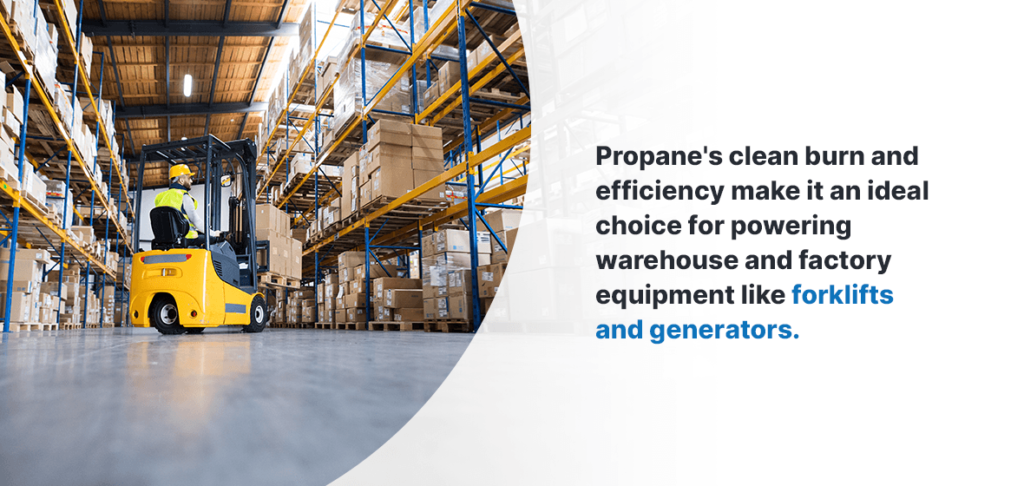
The Future of the Propane Industry
The propane industry faces two major challenges moving forward — meeting the increasing demand for cleaner fuel and working toward solutions to combat climate change effectively.
Despite recent cyberattacks on U.S. infrastructure, propane continues to shine as an excellent alternative energy source for Americans.
Renewable Propane
Renewable propane is a promising development in the propane industry, as it presents a way to make this clean fuel even cleaner. As a byproduct of renewable diesel production, renewable U.S. propane supplies would be chemically identical to offer conventional propane and offer even lower carbon emissions. Renewable propane can also come from biomass sources like animals fats or triglycerides.
According to the National Propane Gas Association, propane distributors in California are currently developing solutions to meet the state’s Low Carbon Fuel Standard while simultaneously meeting customer demand. One way to meet this goal is to scale up renewable diesel production, naturally increasing renewable domestic propane production.
However, government incentives for residential renewable propane use are likely to provide the most significant push toward industry expansion, as the residential sector is America’s largest market for propane.
View Our Propane Service Trucks
At Fisk Tank Carrier, we build our custom-solution propane service trucks and trailers to last. Whatever you need from a truck, we can provide.
We manufacture our trucks using only the highest-quality American-made components, such as aluminum beds and composite decking that resist rusting and corrosion and protect the truck contents. Other optional features include front-mount winches equipped with heavy-duty cables, light-up fenders and custom side racks.
Browse our propane service truck options online to see what we have to offer or request a quote for a custom model today.
Further Reading
Why Do Propane Prices Fluctuate?
Is the Propane Industry Growing?
How Big Is the Propane Industry?
Advice to Someone Starting a Career in the Propane Industry
